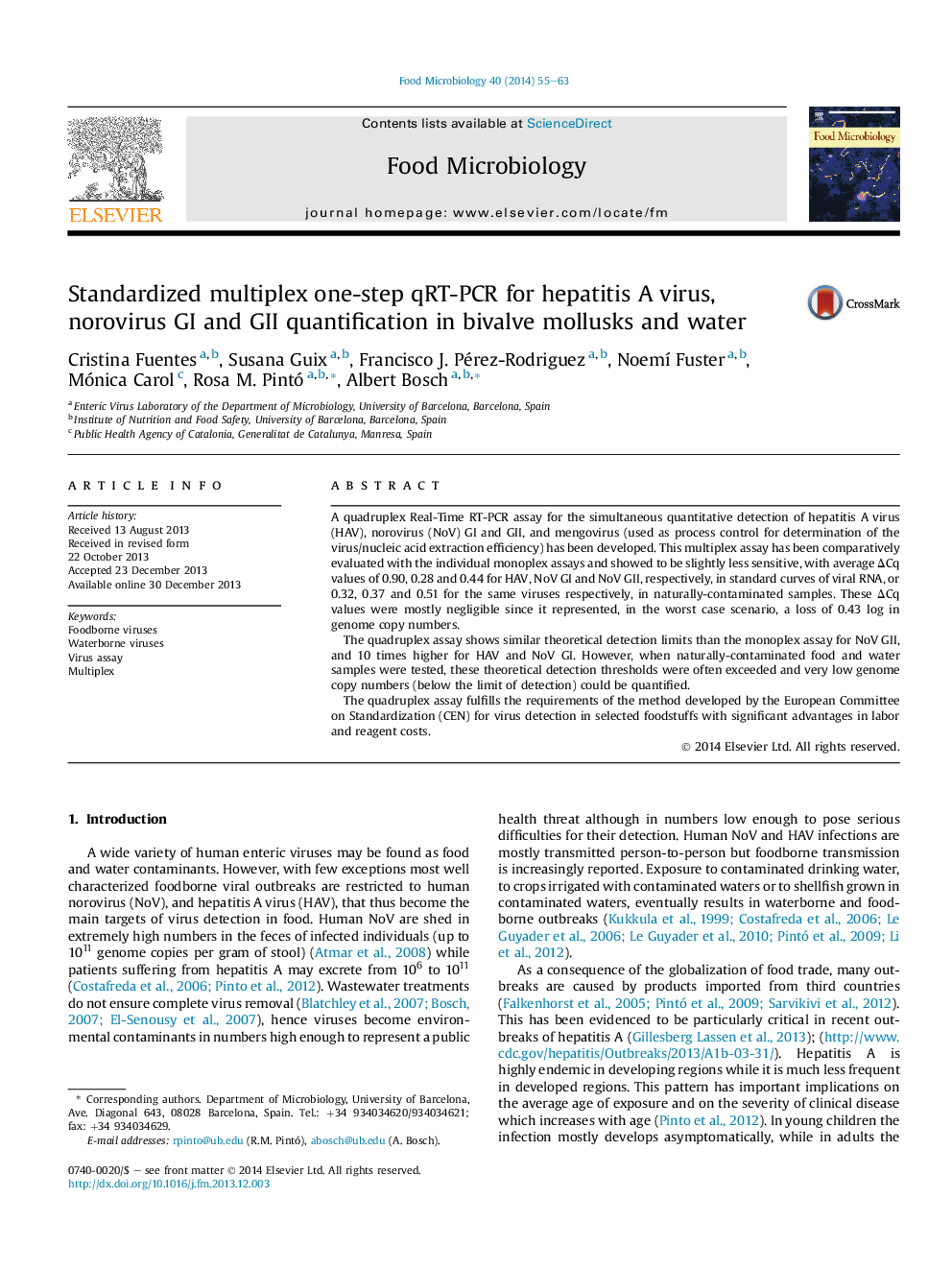| Article ID | Journal | Published Year | Pages | File Type |
|---|---|---|---|---|
| 4362820 | Food Microbiology | 2014 | 9 Pages |
•We developed a multiplex qRT-PCR for NoV GI, GII and HAV in water and food.•The assay is quadruplex with inclusion of Mengo as process virus control.•Sensitivity of the multiplex assay compared with the monoplex is acceptable.•Main advantages of the quadruplex assay are time and cost savings.•The assay fulfills the requirements of the CEN method for virus detection in food.
A quadruplex Real-Time RT-PCR assay for the simultaneous quantitative detection of hepatitis A virus (HAV), norovirus (NoV) GI and GII, and mengovirus (used as process control for determination of the virus/nucleic acid extraction efficiency) has been developed. This multiplex assay has been comparatively evaluated with the individual monoplex assays and showed to be slightly less sensitive, with average ΔCq values of 0.90, 0.28 and 0.44 for HAV, NoV GI and NoV GII, respectively, in standard curves of viral RNA, or 0.32, 0.37 and 0.51 for the same viruses respectively, in naturally-contaminated samples. These ΔCq values were mostly negligible since it represented, in the worst case scenario, a loss of 0.43 log in genome copy numbers.The quadruplex assay shows similar theoretical detection limits than the monoplex assay for NoV GII, and 10 times higher for HAV and NoV GI. However, when naturally-contaminated food and water samples were tested, these theoretical detection thresholds were often exceeded and very low genome copy numbers (below the limit of detection) could be quantified.The quadruplex assay fulfills the requirements of the method developed by the European Committee on Standardization (CEN) for virus detection in selected foodstuffs with significant advantages in labor and reagent costs.
